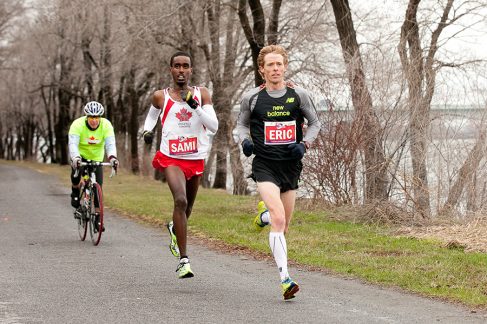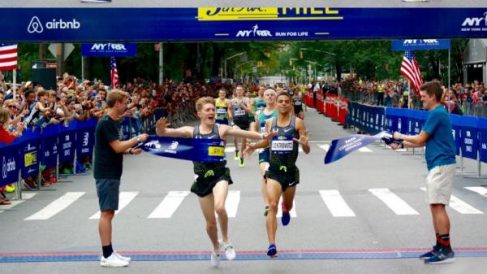After running a half marathon last October, Robert MacDonald is tackling the marathon. It’s a challenging distance for any runner, but MacDonald has never let fear stand in his way.
BY: Robert MacDonald & Amy Friel
I’m scared – but I won’t let my fear hold me back from accomplishing the impossible.
It’s August 7th, 2016, and I’m scared.
Yesterday, Team I Will embarked upon our first training run. I have committed to run the formidable 42.2 kilometre marathon distance just under 10 weeks from now, and hope to have over 150 people join me and Team I Will in support of the Toronto Rehab Foundation.
In October of last year, I completed the half-marathon along with 72 others as part of Team I Will. It was an amazing feat. After that accomplishment, I mentally committed to running a full marathon this October.
Now that training has begun, and the race is only 10 weeks away, I’ve found myself scared of the daunting task ahead of me. I know I have gruelling training, an extensive time commitment, and likely some tough recovery days ahead. All of this has left me very scared of this commitment I have made, both to my fellow team members, my supporters, my sponsors, and myself.
So why I am I going to run this marathon?
Any ordinary person can give a hundred reasons to back down from the challenge.
We tell ourselves we’re too busy. We tell ourselves that a marathon, or a half-marathon, or a 5K, is just too much. We tell ourselves that we don’t need the trouble, that we won’t succeed anyway. We tell ourselves that we don’t have the time, that we might get injured, that there’s no guarantee we’ll even finish.
We can all find a hundred reasons not to take on a challenge that scares us. But I can give you one more.
After an accident in December of 2012, I found myself lying in hospital bed at 26 years old, paralyzed from the waist down. The probability of a successful recovery looked slim-to-none; my neurosurgeon gave me a 5% chance of ever walking again.
It’s difficult to describe the thoughts that race through your mind when you’re told you might never walk again, nor the fear that grips you as you realize that, no matter what the future holds, the road ahead of you will be fraught with difficulty, pain, and immeasurable hard work.
At this point, I knew I had a hundred good reasons for why my life would never be the same. But I realized I had a choice: I could choose to side with my fear, with the overwhelming odds, with the 95% chance that I would never walk again.
In that moment, I was scared. But I sided with the 5% probability that I would walk again. I didn’t know that I would be able to do it; similarly, I still don’t know if I’ll be able to complete this marathon. But I wasn’t about to let fear dictate what was possible.
I have regained so much that was taken away from me by my injury four years ago. I have been able to do this not because I am immune to fear, but because in the face of fear, I decide my fate; fear doesn’t.
Approximately 1% of the population will ever run a half-marathon, and less than 0.5% of the population will run a full marathon. What I’m attempting will not be easy; if it was, it wouldn’t be a challenge. Being scared in the face of a challenge is quite alright. I’m scared, and that’s a good thing.
Who’s ready to overcome their fears with me and accomplish something incredible? I am and I Will.
Join Team I Will today in any distance from the 5K to the marathon!



















 Our Magazine
Our Magazine
